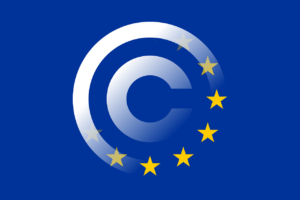
As reported in earlier posts on this blog, in a 2022 study, I examined the national implementations in the 11 Member States that had at that time transposed Article 15 (the press publishers’ right) and Article 17 (the special copyright liability regime for “online content-sharing services providers” (OCSSPs)) of the EU’s Copyright in the Digital Single Market Directive (CDSMD).
In December 2023, this study was expanded to cover a further 14 countries. The total number of countries examined in the report is now 25, excluding only Poland and Bulgaria – the first of which has not yet implemented the Directive and the second of which only implemented it after the work on updating the study had begun. The final study can be found on SSRN or here.
As with the first version, the final study relies on responses by national experts to a questionnaire. The objective was to assess the national implementations of the two articles for compliance with the internal market objective of the CDSMD and with the EU’s law of fundamental rights. This post considers the insights provided by the completion of the study.
The study was commissioned by Coalition 4 Creativity, but written in complete academic independence.
Among the conclusions drawn from the final study one stands out: none of the 25 examined Member States is fully compliant with the Directive. This outcome is particularly striking as it is starker than that which emerged from the first version of the study. While the conclusion then was that only the Netherlands presented no implementation irregularities (itself not an uplifting finding!), re-opening the study prompted a re-examination of the wording of the Dutch implementation of Article 17 CDSMD comparative to other jurisdictions. This revealed an implementation slip: Article 17(2) CDSMD states that authorisations obtained by an OCSSP will cover corresponding infringements by their users, “when they are not acting on a commercial basis or where their activity does not generate significant revenues”. By contrast, the Dutch implementation (as reported by the national expert Prof. Stef van Gompel) states that the protection for users does not apply “unless they are acting on a commercial basis or the revenue generated by their activity is significant.” (Emphasis in both cases is added).
The problem is clear: by shifting the language from the positive to the negative, the re-wording renders the conditions cumulative rather than alternate. In this way, it sets a stricter standard. The same problem appears to have occurred in the Czech, Finnish and Slovak implementations – the examination of which in the second version of the report is what led to double checking the wording of earlier implementers and revealed the Dutch misstep. What is not clear, of course, is that these national legislators in fact intended to achieve this divergence: more likely, they simply re-phrased the text in translation, without realising the resultant distortion.
Tweaking the Directive
The example is typical. The one thing that shines through the examination of the national implementations of Articles 15 and 17 CDSMD is that they are riddled with additions to, deletions from and other various rewordings of the text of the Directive. Some of these adjustments are substantial. A few have attracted enormous attention – the obvious example is Germany and Austria’s hot-button “balanced” elaboration on Article 17’s contradictions. But more minor tweaks can also have significant effects.
The earlier blog posts on the first version of the study detail some of the most prominent instances of such issues, as these emerged in consideration of the first batch of countries examined. The 14 new jurisdictions add to this list. Indicative examples of the issues uncovered in the expanded study include the following:
Article 15:
- Croatia, Greece, Lithuania, Romania and Slovakia join France and Italy in adding elaborative flourishes that attempt to define the phrase “very short extracts” in a restrictive manner.
- The Finnish implementation does not limit the users targeted by the press publishers’ right to ISSPs. The national expert Tuomas Mylly reports that this, strangely, seems to be the result of oversight.
- Finland, Lithuania and Slovenia omit the restriction of the press publishers’ right to online uses. Instead, Finland introduces the very different requirement that the use have “a purpose of gain”. Lithuania restricts the right to “electronic press publications”. These alternatives are not convincing. Slovenia simply skips the issue.
- Croatia took the opportunity of implementation to introduce new protections for offline uses of press publications, unforeseen in the CDSMD.
- Belgium and Croatia, like France and Hungary before them, offer no explicit protection for the holders of related rights over subject matter incorporated in press publications.
- The Czech Republic and Croatia provide no protection from the press publishers’ right for works or other subject matter for which protection has expired. (The first study found that this was also the case in Denmark, Estonia, France, Hungary).
- In the Czech Republic, there is no exclusion for private or non-commercial uses by individual users (the first study found that this was also the case in France). In Slovakia, protection is only afforded to private and non-commercial uses. In Portugal, users must be exercising their right to be informed and have lawful access to be protected.
Article 17:
- Finland and Sweden incorporate no carve-outs from OCSSP scope (the first study showed that this was also the case in Denmark and Hungary, while in Estonia, France, Italy it is unclear if the list is an open or closed one). In Slovakia and Portugal, the list of carve-outs – contrary to the wording of the CDSMD – is closed.
- In Slovakia and Sweden, there is no prohibition on general monitoring obligations (this is also the case in Denmark, according to the first study).
- In Croatia, Cyprus, Czech Republic, Finland, Greece, Portugal, Romania, Slovenia and Slovakia (alongside Austria, Denmark, Estonia, France, Germany, Hungary, Italy, and Spain from the first report) extend their implementations of Article 17 to related rights holders not covered by the Directive.
- Cyprus, Greece and Latvia (like Austria, Italy and Spain before them) have replaced the term “best efforts” in Article 17(4) with rewordings that set a stricter standard: “every effort”, “every possible effort”, “greatest efforts”, “biggest efforts”. Sweden goes the other way, by only requiring measures providers “can reasonably be required to take”.
- Finland expands the reach of the infringing act from “giving the public access” to protected content to “saving works to the service”.
Homing instincts
As mentioned above, some of these changes are potentially accidental. In other cases, it is possible to discern the logic behind them. So, for example, the general monitoring prohibition incorporated in Article 17(8) DCSDM can be read as directed towards national legislators, as opposed to courts or other enforcement authorities, meaning that it may not need to be transposed into national law itself – thus justifying Slovakia, Denmark, Sweden’s decisions not to transpose it.
In some cases, the national logic may be understandable but unconvincing. For example, the aforementioned lack of protection for the holders of related rights over subject matter incorporated in press publications in Belgium, Croatia, France and Hungary can be explained by the homing instincts that led those national legislators to rely instead on general provisions according to which related rights cannot influence the protection of copyright – without realising that this leaves related rights holders out in the cold.
Occasionally, the same outcome results in different countries from different drafting approaches. So, while – as mentioned above – 20 out of 25 countries extend the protection of Article 17 to related rights not mentioned in the Directive, some do this by referring in a general way to related rights, which implies that all related rights recognised in their national law are covered. Others explicitly list the related rights they cover and include rights not mentioned in the Directive.
CDSM Directive drafting traps
Sometimes, it seems as though the national legislators were misled by the Directive itself.
An example is offered by those countries (Austria, Croatia, Finland, France, Germany, Greece, Malta, Romania and Slovakia) that have stated in their law that Article 17(4)’s immunity mechanism does not apply to providers whose purpose is to engage in or to facilitate piracy. Three countries (Austria, Germany and Sweden) also add a requirement of competition with other providers. These conditions are very clearly inspired by Recital 62 of the Directive, in which they are included. But – crucially – they are not reflected in the text of Article 17 itself. There is a very strong argument that the operative part of the Directive should take precedence over the preamble – indeed, the CJEU has been firm on this point. This arguably brings these jurisdictions out of line with the Directive.
An interesting situation emerges in Cyprus, where, according to the Cypriot expert, only the exceptions and limitations mentioned by the EU legislator in Article 17(7) apply to uses on online platforms. The general exceptions and limitations do not, which is obviously very unfortunate. At the same time, there is no escaping the fact that that Article 17(7) lists only quotation, criticism, review, parody, caricature and pastiche as necessary exceptions for the liability system set up by Article 17(1). The exceptions and limitations of Article 5 of the Information Society Directive remain entirely optional for the Member States – including exceptions and limitations of very obvious relevance in the OCSSP context, such as incidental inclusion.
Does it matter?
Despite the numerous discrepancies identified in the comparative implementation report, five years after the adoption of the Directive and with the transposition process almost over, the sky has not fallen in. As commentators have observed, the internet has not broken – nor of course do right-holder pockets appear to be overflowing. What also remains unchanged is the legislative quality of Articles 15 and 17: it is poor. This filters through to the quality of national implementations. Those that “copy-out” the Directive have copied its faults. Those that diverge from it risk creating new problems – and often do. Sometimes these problems are minor and sometimes they drill into the core purpose and effect of the legal rules.
The CDSMD was intended to modernise EU copyright law in a harmonised manner. Articles 15 and 17 achieve the first objective, in the sense that they deal with modern technologies. However, the comparative implementation raises real questions about the success of this attempt. The report also makes clear that real harmonisation remains elusive.
CC BY 4.0
________________________
To make sure you do not miss out on regular updates from the Kluwer Copyright Blog, please subscribe here.


